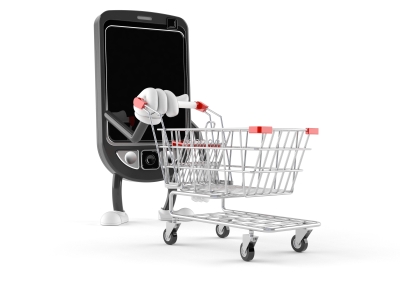
Most of the media around Click Frenzy – Australia’s answer
to the huge weekend of online sales over Thanksgiving in the US – focused on
the failure of the Click Frenzy site to cope with the volume of people trying
to access it in its early days. That the volume of traffic to the site
surprised even the organisers who claimed prior to the event that they would be
able to deal with traffic extremes, suggests there was at least plenty of
interest.
Grant Arnott, the man behind Click Frenzy, stated that
1.55m shoppers, or “one in twenty Australians” had participated in the
Australia’s first national online shopping event, which was “encouraging” for
local industry. Most of the figures provided relate to the huge increase in traffic; sales figures are harder to come by but whilst not mentioning the results, many retailers are claiming they did see a substantial lift in sales during the event.
So despite the issues with the site, on the surface it appears Click Frenzy had it's fair share of winners. Here are 4 learnings we've taken from Click
Frenzy:
1.
Aussies are up for online bargains. With a
purported 1.55m visitors to the site, an astounding 28% engagement statistic on
Facebook, and an increase of 240% across the 24 hour period in one of the
online payment systems used (eWAY), it’s clear that Australians have an
appetite for this kind of sale.
2.
Click Frenzy did a great job at creating
enormous interest. Whilst Cyber Monday has been around since 2005, this was the
first year that Australia was able to raise maintsream awareness of this focused online
discounting sales event.
3.
Retailers can participate without being part of
a central site. Brands such as David Jones who didn’t participate in the Click
Frenzy site (who instead ran an online “Christmas Frenzy” sale) announced a
record day in online sales. This makes complete sense and proves that with the
right offers and targeted advertising, retailers have the ability to intercept
people looking for online bargains without having to be on the Click Frenzy
site.
4.
Be all in, or all out. There is general
perception that Australian retailers are playing catch up with the rest of
the world when it comes to eCommerce, and examples of sites not being able to cater for events such as
this re-enforces the perception that digital in this country is still an
afterthought.
Click Frenzy was created as an attempt to create an Australian answer to the phenomenal
success of the Cyber Monday online sales event that occurs after the Thanksgiving weekend. It started in earntes in 2005 and has experienced incredible YOY growth. This year Cyber Monday alone accounted for
nearly $2bn in sales - up 30% from the same day last year according to an IBM study. This upswing has been attributed mostly to department stores, who showed a 43% increase in sales, and mobile technology (phones and tablets) which experienced a massive 96% increase since 2011.
Cyber Monday came about as brands began offering online discounts over what was already an important holiday shopping weekend, only 6 weeks out from Christmas. The online offering allowed people to access the great offers available over this weekend, without having to deal with the traffic, crowds and chaos, and stay home to enjoy the holiday weekend.
With over 29% of Australian online shoppers accessing overseas sites, it makes perfect sense to try and attract those back to Australian sites. The question remains – can Aussie retailers do this. Australians are shopping overseas for a number of reasons – including price, free delivery, the strong Australian dollar, but most importantly it is access to range that they want. In addition to range by store, we’ve all of a sudden got access to retailers we don’t even have in this country, and the ability to shop these stores is still a great experience for us here on the other side of the world. Even if we could compete, it’s still going to be hard work winning back those people who love the idea of shopping overseas.
Cyber Monday came about as brands began offering online discounts over what was already an important holiday shopping weekend, only 6 weeks out from Christmas. The online offering allowed people to access the great offers available over this weekend, without having to deal with the traffic, crowds and chaos, and stay home to enjoy the holiday weekend.
With over 29% of Australian online shoppers accessing overseas sites, it makes perfect sense to try and attract those back to Australian sites. The question remains – can Aussie retailers do this. Australians are shopping overseas for a number of reasons – including price, free delivery, the strong Australian dollar, but most importantly it is access to range that they want. In addition to range by store, we’ve all of a sudden got access to retailers we don’t even have in this country, and the ability to shop these stores is still a great experience for us here on the other side of the world. Even if we could compete, it’s still going to be hard work winning back those people who love the idea of shopping overseas.
The other thing to consider is the timing of the event. The sales in the US where based around a period of traditionally strong retail sales over a holiday weekend. Perhaps we should be focusing our energies on looking
at our equivalents of the Thanksgiving weekend, and giving Aussies who
don’t want to face the traffic, crowds and chaos, access to those same deals
online. The opportunity could be around the Boxing Day or New Year’s sales,
giving those of us sitting at home and relaxing something to do
with our shiny new tablets and smartphones!



























